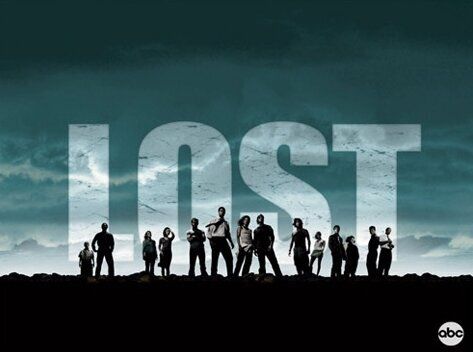
This article was co-authored by Alexandra Bell, Research Associate at Ploughshares Fund.
The giant hydrogen bomb detonated on the ABC hit show, Lost, in its season finale this week really existed. It really was called "Jughead." Constructed in 1954, it was never actually exploded, leaving space for Lost's writers to whisk it away to the mystery island.
As fans of Lost, we were amused to have the 40,000-pound thermonuclear device make its appearance in season five of the show. Jughead, first seen dangling from a tower early in the season, is detonated in the finale as the survivors attempt to change their history. The effect of a nuclear explosion on time travel is a bit outside our expertise, but Lost's writers got the basic facts of nuclear weapons right. These guys did their homework.
Jughead Dissected
The United States built thousands of hydrogen bombs in the 1950s. Each, many times more powerful that the atomic bombs that destroyed Hiroshima and Nagasaki.
Unlike atomic bombs that get their energy from fission, or the splitting of atoms, hydrogen bombs get their energy from fusion of hydrogen atoms. This is the basic energy force in the universe. It is what powers the sun and all stars. There is no theoretical limit to how big we could make a hydrogen bomb. It is just a matter of how large a quantity of hydrogen isotopes we wants to fuse, though the logistics become more difficult. In 1961, the Soviets planned to test a 100-megaton bomb (equal to 100 million tons of TNT), but settled for the 50-megaton Tsar Bomba. It was the largest bomb ever tested, twice the size of the biggest U.S. test.
The real-life Jughead was indeed the hulking behemoth depicted in Lost. It was designed to explode with a force of 8 million tons of TNT, or over 500 times more force than the Hiroshima bomb.
As accurately depicted in Lost, a fusion weapon like Jughead has two or more nuclear components in the same device that are ignited in stages. As Princeton physicist Frank Von Hippel likes to say, "Within each big bomb is a little bomb."
Although it is not clearly explained in the show, the Lost character Sayid takes out what would be the smaller fission "primary" that would be used to create the heat, pressure and radiation necessary to compress and ignite the separate fusion secondary, vastly increasing the explosive yield. This is the bomb he takes to the Swan site.
Would it look as compact as the device Sayid tucks in his backpack? Probably not, but it would not be too much bigger. Could he actually carry it without fear of radiation? Yes. As physicist Ivan Oelrich, also a Lost fan, details:
"People think that the fuel that drives an atomic bomb must be intensely radioactive, but in fact it's not. It becomes radioactive after the reaction."
Of course, the story is not entirely accurate - you cannot trigger a chain reaction by beating an atomic bomb with a rock, though props to Juliet for really following through. We can grant the writers of Lost a little leeway, since time travel and smoke monsters are not exactly hard physics either.
Nuclear Nuts
The fantasy and reality of Jughead illuminate the absolute insanity of the Cold War arms race. (For the best historical account, check out the Richard Rhodes trilogy: The Making of the Atomic Bomb, Dark Sun and Arsenals of Folly.)
While Albert Einstein and some members of the Manhattan Project, like chief scientist Robert J. Oppenheimer, were appalled at what they had created, others like Edward Teller pushed to produce the H-bomb. Oppenheimer and the entire scientific General Advisory Committee saw it as a weapon of genocide. They told President Truman:
"The use of this weapon would bring about the destruction of innumerable human lives; it is not a weapon which can be used exclusively for the destruction of material installations or military or semi-military purposes. Its use therefore carries much further than the atomic bomb itself the policy of extermination of civilian populations."
Truman, fearful of the political reaction to a US decision not to build the new bomb if the Soviets did, overruled the scientists. That is how we (and the rest of the nuclear powers) came to create these colossal Jugheads, capable of obliterating entire cities.
We went nuclear nuts in the 1950s, increasing the U.S. arsenal from 200 atomic bombs in 1949 to over 20,000 mostly hydrogen bombs by 1960. The Soviets raced to catch up, with both countries peaking at about 65,000 bombs in 1986.
The good news: we have cut the number of nuclear weapons by 63 per cent since then. The bad news: we still have around 23,000 left. Lost, intentionally or not, gives us the essential problem: the longer the bomb hangs around the island, the more likely it is that someone's gonna use it.
We have been exceedingly lucky to get this far without an intentional or accidental use of nukes. So the next time you think about how crazy Lost is, just think about how insane our nuclear stockpiles are.
